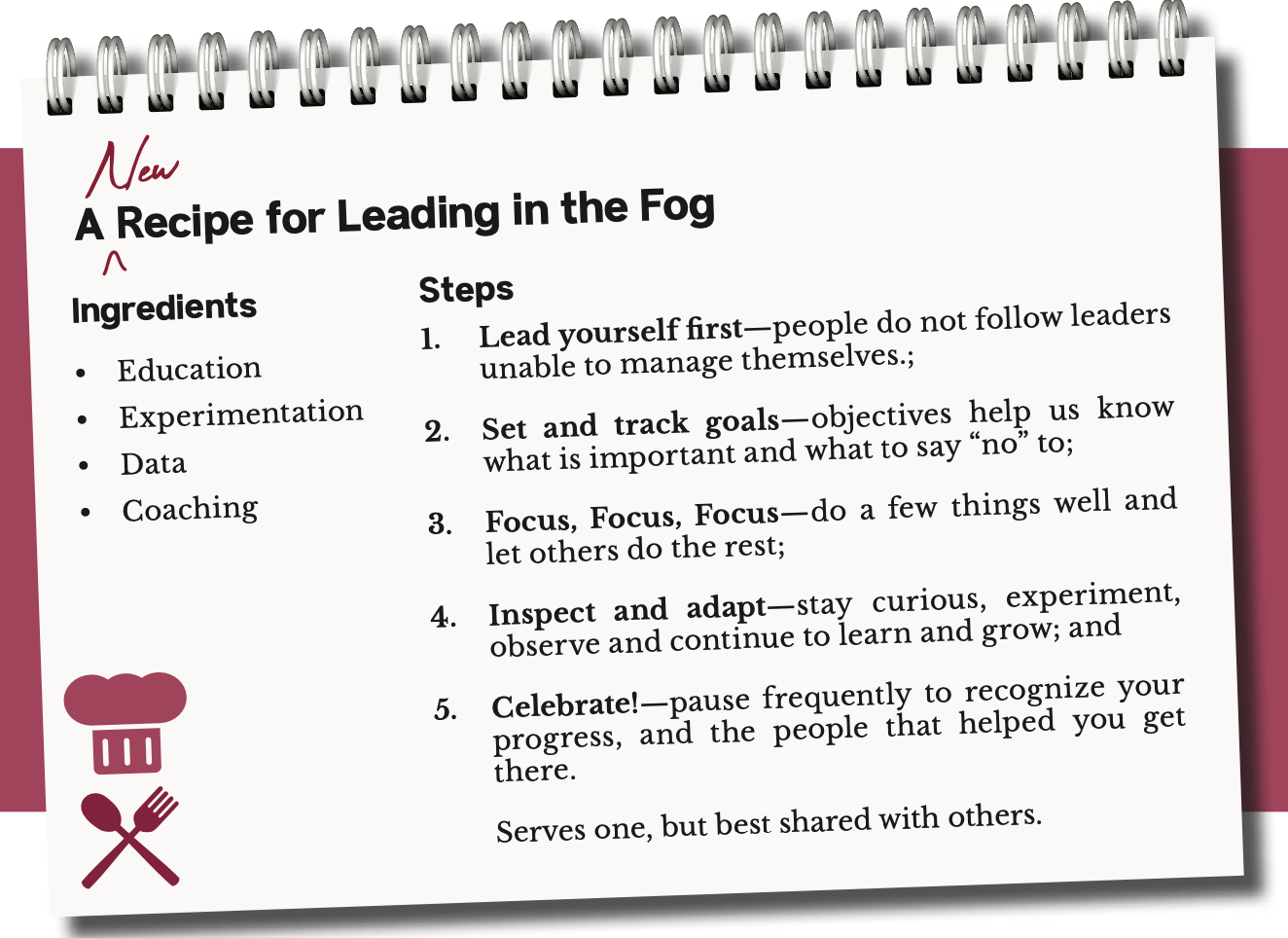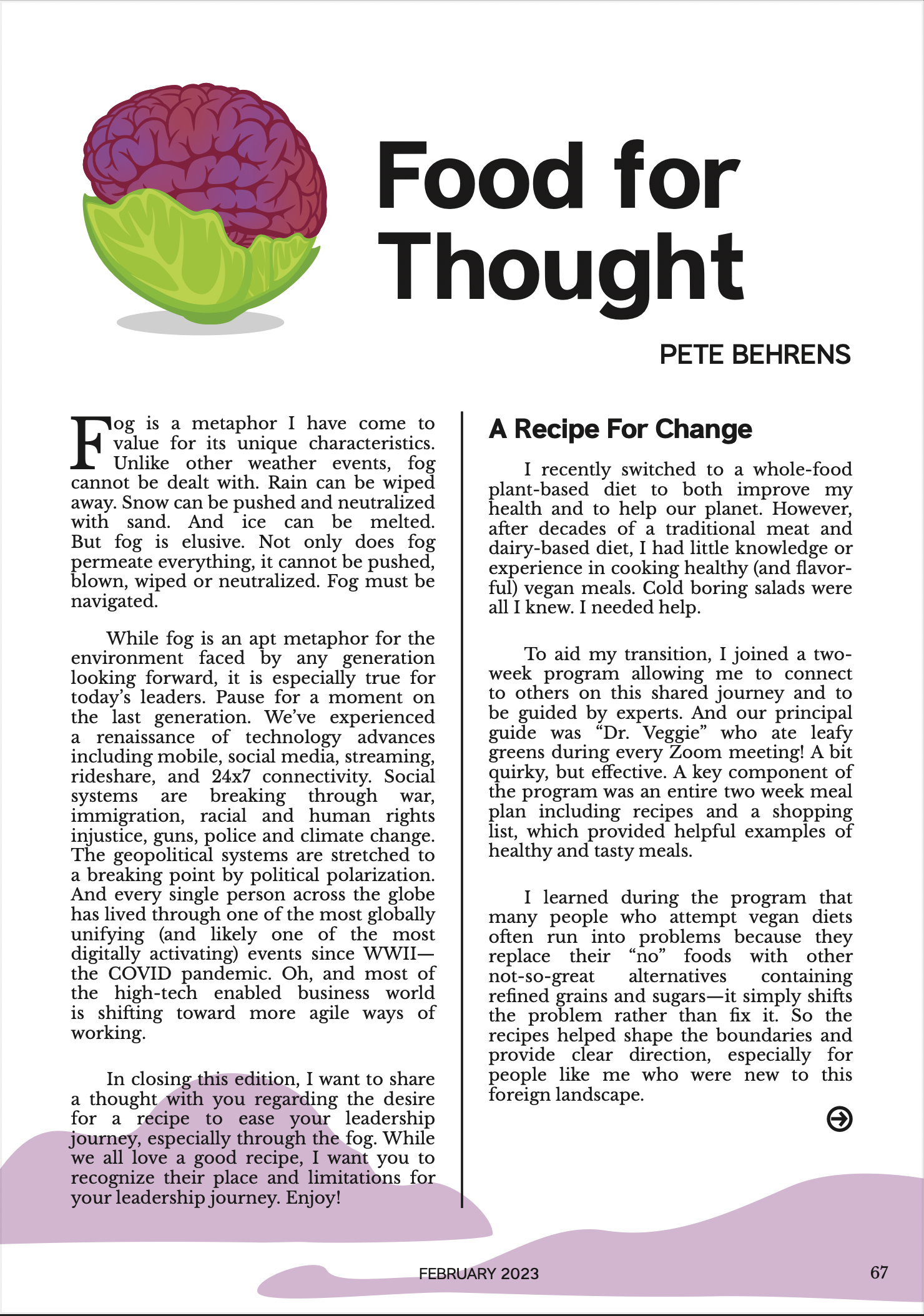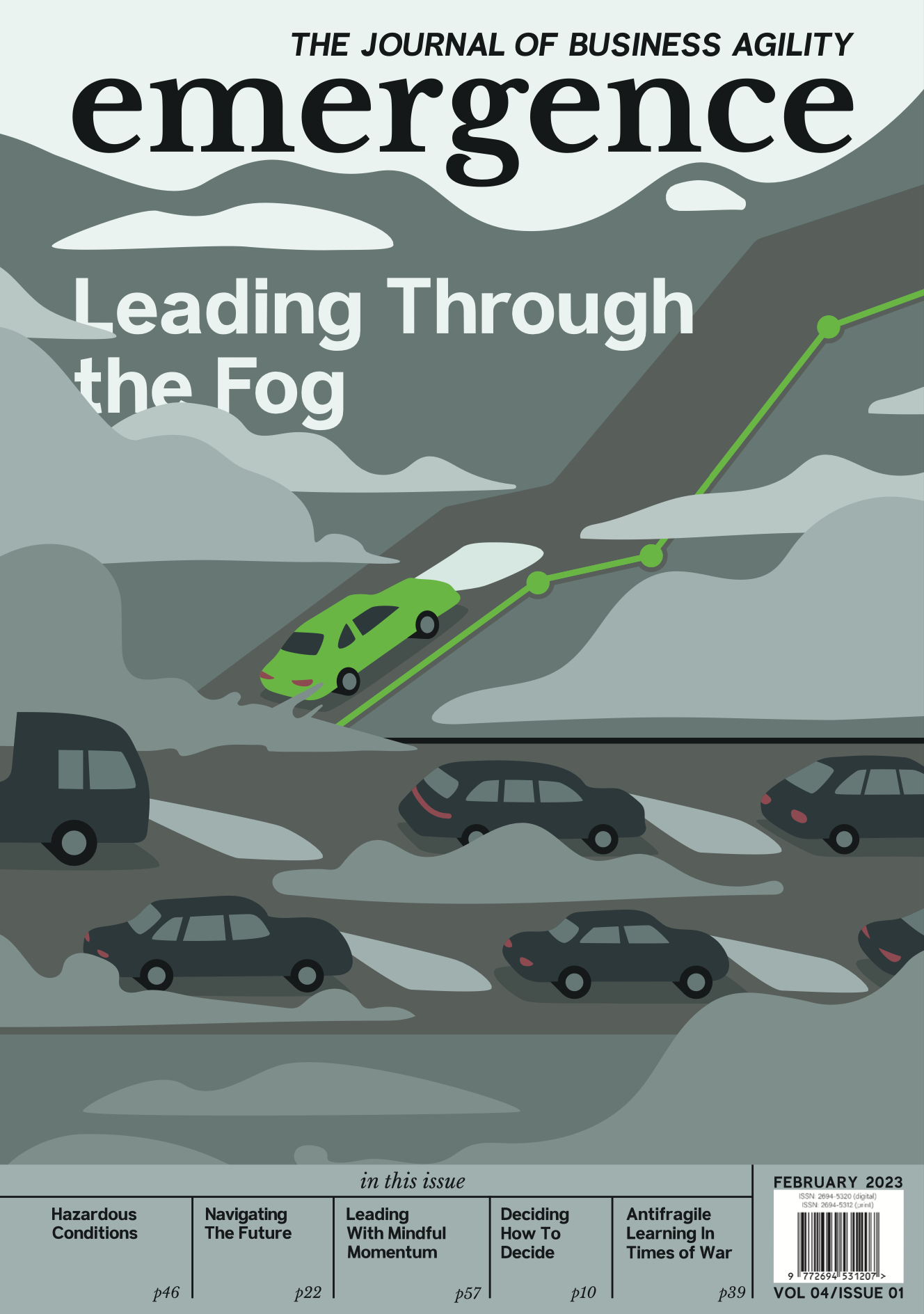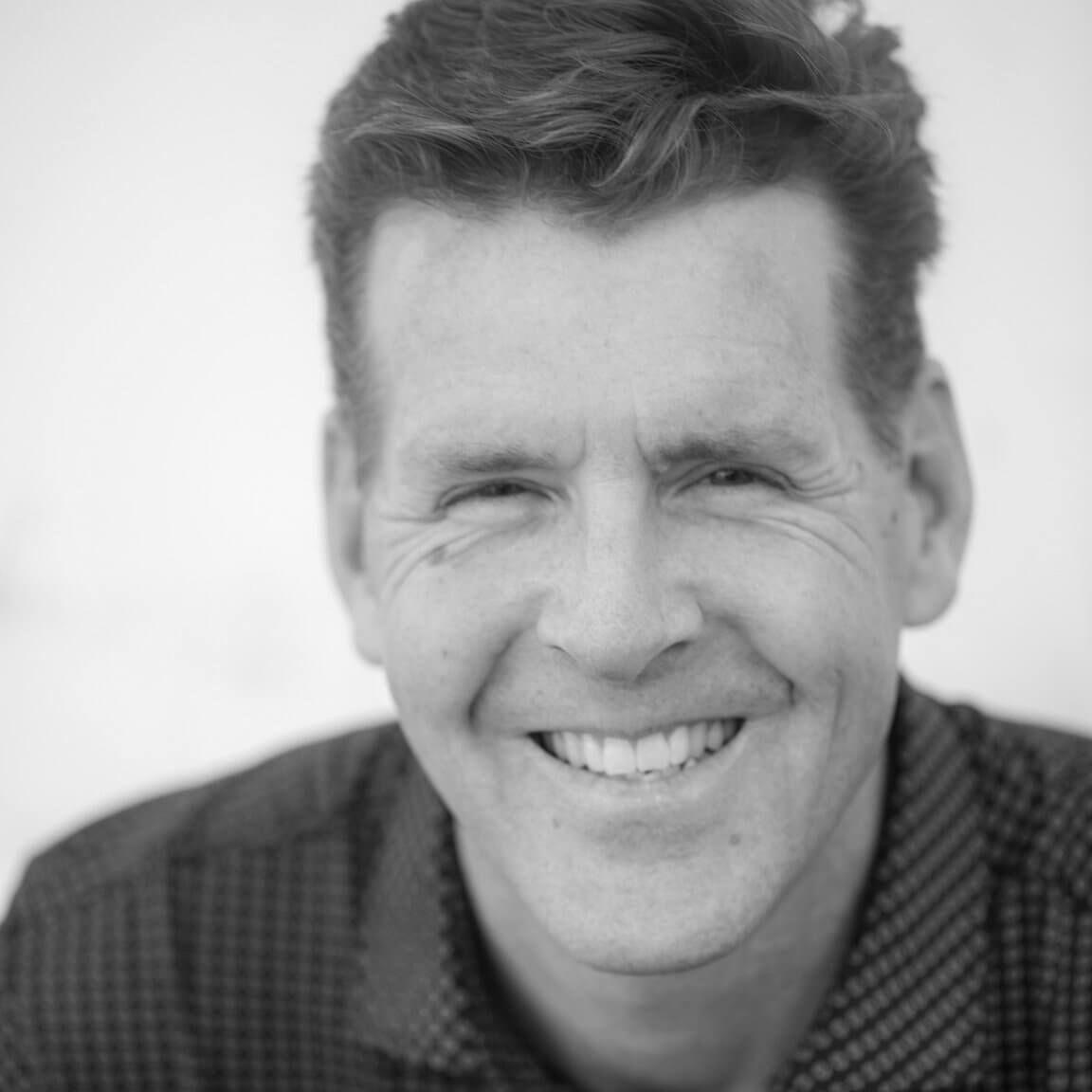Food For Thought
Fog is a metaphor I have come to value for its unique characteristics. Unlike other weather events, fog cannot be dealt with. Rain can be wiped away. Snow can be pushed and neutralized with sand. And ice can be melted. But fog is elusive. Not only does fog permeate everything, it cannot be pushed, blown, wiped, or neutralized. Fog must be navigated.
While fog is an apt metaphor for the environment faced by any generation looking forward, it is especially true for today’s leaders. Pause for a moment on the last generation. We’ve experienced a renaissance of technology advances including mobile, social media, streaming, ride share, and 24x7 connectivity. Social systems are breaking through war, immigration, racial, and human rights injustice, guns, police, and climate change. The geopolitical systems are stretched to a breaking point by political polarization. And every single person across the globe has lived through one of the most globally unifying (and likely one of the most digitally activating) events since WWII—the COVID pandemic. Oh, and most of the high-tech enabled business world is shifting toward more agile ways of working.
In closing this edition, I want to share a thought with you regarding the desire for a recipe to ease your leadership journey, especially through the fog. While we all love a good recipe, I want you to recognize their place and limitations for your leadership journey. Enjoy!
A Recipe For Change
I recently switched to a whole-food plant-based diet to both improve my health and to help our planet. However, after decades of a traditional meat and dairy-based diet, I had little knowledge or experience in cooking healthy (and flavorful) vegan meals. Cold boring salads were all I knew. I needed help.
To aid my transition, I joined a two-week program allowing me to connect to others on this shared journey and to be guided by experts. And our principal guide was “Dr. Veggie” who ate leafy greens during every Zoom meeting! A bit quirky, but effective. A key component of the program was an entire two-week meal plan including recipes and a shopping list, which provided helpful examples of healthy and tasty meals.
I learned during the program that many people who attempt vegan diets often run into problems because they replace their “no” foods with other not-so-great alternatives containing refined grains and sugars—it simply shifts the problem rather than fix it. So the recipes helped shape the boundaries and provide clear direction, especially for people like me who were new to this foreign landscape.
Shuhari—Moving Past Recipes
As a Certified Scrum Trainer (CST) with the Scrum Alliance for 10 years, I became a fan of Shuhari, a Japanese martial arts concept loosely translated as follow the rules, break the rules, transcend the rules. We trained ScrumMasters to use Shuhari for both personal development of their new role and in developing their teams and organization in learning and applying Scrum.
Through Shuhari, you follow the recipes until you become accustomed to and deeply understand the rules behind them—how and why they are in place. Only after that deep understanding can you break from the recipes and experiment with new approaches.
This is how effective ScrumMasters and agile coaches can adapt the principles and practices around Scrum to mature effective organizations.
As an agile coach myself I was fortunate to collaborate with the Salesforce leadership team early in their transition to a high-performing company. We effectively broke free from the traditional recipes of Scrum and Kanban to birth an incredible wave of productivity which is still going strong after 15 years. (More on this story in an upcoming edition of Emergence)[1].
Another example of breaking from recipes was Spotify, as beautifully portrayed by Henrik Kniberg in the YouTube videos on Spotify’s Culture[2].
An interesting and somewhat sad twist to this story is that the video series became so trendy that Spotify Culture became its own recipe, much to the chagrin of Kniberg who insisted others only use it as a reference data point rather than a recipe. He further shared that the videos illustrate only one point in time, and that the videos became outdated soon after their release.
The Problem With Recipes
Kniberg recognized something most people miss—recipes can be reckless, especially when applied to a business culture context. Let’s take a look at one of the biggest recipe mistakes of the business world over the past 40 years!
In 1982, Tom Peters and Robert Waterman of McKinsey published what has become one of the most influential business books of all time: In Search of Excellence: Lessons from America’s Best- Run Companies. The authors analyzed 43 top-performing U.S.-based companies and abstracted a recipe for success called the 7S Framework: strategy, structure, systems, staff, skills, style, and shared values[3].
Since that time, a slew of researchers have sought to do the same, analyzing companies and abstracting the recipes which drove high-performance. In 1994, Jim Collins and Jerry Porras released their six-year analysis and patterns of 18 successful companies in Built to Last, with special focus on enduring performance characteristics.
The leadership education and development over the past 40 years has been built on a generation of heavily researched companies and their recipes of success. Yet to what end?
Richard D’Aveni, professor of strategic management at Dartmouth’s Tuck School of Business, questioned the science behind the “traits of successful companies” genre, and others followed.
In 2006, Scott Keller and Colin Price of McKinsey analyzed their research data along with performance data over the following decade for their book Beyond Performance. They found that of the identified excellent companies showcased in the books listed above, 20% no longer existed, 46% were struggling, and only 33% remained as high performers.
Just as in baseball, batting 330 is a terrific stat. However, in 2007, Phil Rosenzweig in his book The Halo Effect further exposed the pseudoscientific tendencies of building recipes by analyzing business performance at its peak. He exposes many delusions these researchers suffered, including correlation versus causality, using a single explanation to connect an outcome, and connecting winning dots while ignoring the losing ones. Selective data at best, malpractice at worst.
No one is questioning that the companies researched for these books were, at one time, high-performing. A number of them were indeed built to last! However, what has become clearer with time is that developing recipes based on their collective success is flawed. Yet leaders continue to follow these flawed recipes.
It’s time for a new recipe.
A Recipe For Today?
We are coming up on two decades since Keller, Price, and Rosenzweig shattered the “traits of successful companies” research genre. So much has changed since then. Our landscape has fogged over. So not only were the recipes of the past wrong, we must ask: is there any recipe that might help lead through the foggy, fast-paced landscape of today’s business environment?
We have a few clues to assist us. First, recipes help. Second, recipes are only a starting point. With that in mind, let’s heed the advice from some experts to help us build a new recipe.
Keller and Price determined that much of the failure to sustain a high-performance culture was an excessive bias toward a static view of managing performance. In short, recipes that build success are not sufficient to sustain success through disruptions.
Bill Joiner, author of Leadership Agility, explains that the recipe for leadership success is agility. Not capital “A” Agile, but small “a” agility. Leadership agility means leaders who are more aware and actively choose in the moment. In other words, the recipe is to inspect and adapt. Just like Scrum.
Adam Grant, author of Think Again, says the recipe for today’s leaders is to think like a scientist. This means shifting from knowledge we use to preach, prosecute and politic as if it were “right” to a scientific mindset that learns what is “right” through hypothesis, experimentation and data gathering. Once again, this points us to an inspect-and-adapt approach.
And Brene Brown, author of Dare to Lead, shares the recipe for today’s leaders as the courage to be vulnerable. That means having the courage to step away from what you know and be open to what you don’t know. Vulnerability to not having an answer, to even asking the question. Again, inspect and adapt.
Maybe I am suffering a similar fate to Peters and Waterman and believing I can postulate a recipe from successful authors of our time. However, it appears to me that when the data points begin to cluster, it means something. Am I just connecting the winning dots? Am I adding causality in correlated data? You be the judge.
I wish I had a clear, easy-to-follow recipe for you to follow as a leader. Instead, the recipe I have in mind will be hard to follow, and it may lead to some failure. In fact, I am
sure
it will lead you to failure. But that’s the point. We learn best through failure. We need the courage to try when failure is an option.

Dedication
A big “Thank You!” to the Business Agility Institute and Emergence teams for trusting in me to lead the way on this edition and for co-creating with me at every step. A shout out to the contributing authors I have come to know and respect over my career for the courage to write and share their stories. And a grateful bow to my Agile Leadership Journey team for their creativity and steadfast dedication to building a world-class organization.
This edition would not have been possible without each and every one of you. While others may only see the lone leader in the limelight, it is likely only possible because they are being lifted up by those who work with them.
Enjoy the Journey!
This content was originally published in the February, 2023 Edition of Emergence, The Journal of Business Agility. It has been republished here with the permission of the publication.
What is Emergence?
Emergence is the Journal of Business Agility from the Business Agility Institute. Four times a year, they produce a curated selection of exclusive stories by great thinkers and practitioners from around the globe. These stories, research reports, and articles were selected to broaden your horizons and spark your creativity.
References
- https://resources.scrumalliance.org/Article/salesforce-an-agile-case-study and https://trailridge.team/client-stories/salesforce
- Spotify Engineering Culture Part I: https://youtu.be/Yvfz4HGtoPc and Spotify Engineering Culture Part II: https://youtu.be/vOt4BbWLWQw
- https://en.wikipedia.org/wiki/In_Search_of_Excellence








